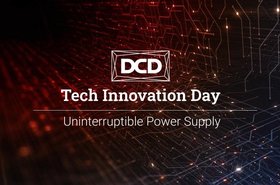Promises are easy to make, but can be harder than expected to fulfil.
Although the data center sector has made big strides in improving efficiency and adopting sustainable energy sources – especially at the big name, hyperscale end of the spectrum – there is still much to be done if some operators are going to come anywhere near the net-zero carbon emissions promises they’ve made in recent years.
The immense challenge net-zero poses for the data center sector hasn’t stopped a string of data center operators also becoming signatories of the ‘Climate Neutral Data Center Pact’. The Pact lays out several ambitious and measurable targets for both 2025 and 2030, and has been signed in recent months by global operators like DigiPlex, Interxion and CyrusOne
And the investment is certainly following the promises. According to Gartner global data center market spend is predicted to reach €160bn by the end of 2021. This is fuelled by hyperscale growth, the provision of new capacity, and in Europe alone, CBRE predicts 2021 will be a record year for new supply, with more than 415MW of capacity added in the Frankfurt, London, Amsterdam and Paris (FLAP) markets.
“Alongside many of the agreed terms within the pact is the commitment to ensuring that all new data centers in Europe will meet an annual power usage effectiveness (PUE) ratio of at least 1.3 or 1.4. Currently, inspiration to meet these goals can be taken from operators in the Nordics such as EcoDataCenter, which operates at a world-class PUE of 1.15,” Elena Fedotova, business vice president of Secure Power at Schneider Electric France, told DCD.
Another factor is customer demand. A recent report from Schneider Electric and 451 Research found that 97 percent of colocation customers are demanding contractual commitments to sustainability. And more than 57 percent of the 800+ professionals surveyed suggested that efficiency and sustainability will be competitive differentiators within just three years, meaning that operators need to get busy on meeting their net-zero carbon emissions promises ASAP – or else.
The need for efficient, resilient power protection
According to the Uptime Institute’s 10th annual-data center survey, one-third of survey participants admitted that they had experienced a major outage in the previous 12 months, and one-in-six claimed it had cost more than €825,000 ($1M). Mission-critical products, such as uninterruptible power supplies (UPS), are a foundational component of data center resiliency. They provide peace of mind and protection against downtime, which is arguably the single highest priority for operators.
Yet, in an industry where outages are becoming more frequent, how can operators balance demands for energy efficiency and reduced carbon emissions with resilience? “Safeguarding your IT by deploying an N+1 configuration for additional redundancy might, indeed, be the most reliable approach, but when increasing resilience, efficiency is sacrificed,” says Fedotova.
“One-way to overcome this is to consider deploying a modular UPS, which offers a number benefits, including the capability to right size or scale with your business. However, as with data center design, a ‘one size fits all’ approach will not work. ‘Right sizing’ or deploying a modular system enables users to enjoy the benefits of scalability, efficiency, and reliability,” she added.
Energy saving modes and safety
Another key consideration is the UPS’ operating mode. Some enable operators to enhance the energy efficiency of the system, while barely compromising on the level of redundancy, says Fedotova. Schneider Electric’s patented ECOnversion technology, for instance, enables users to gain the highest level of energy savings via an operating efficiency of up to 99 percent, without sacrificing load protection.
What’s more, in ECOnversion mode the load is never exposed directly to unconditioned utility power, as is the case with standard eco-mode. This approach means the reliability and availability issues that have long hampered traditional eco-modes are addressed, while delivering increased efficiency, according to Schneider.
Battery technology is also critical. Lithium-ion batteries, for example, offer two-to-three times longer lifecycles than old-style valve regulated lead-acid (VRLA) cells, says Fedotova. Furthermore, safety features, such as ‘live swap’ technologies, can enable battery modules to be replaced while the UPS remains fully connected to the load. This protects the user from arc flash incidents, while ensuring maintenance or upgrades can be carried out with minimal disruption to business continuity.
New UPS technologies, and their role in sustainability
Choosing a resilient UPS consistent with sustainability demands is an important part of any data center strategy to adapt to market demands for uptime, efficiency – and reduced carbon emissions. Investment in energy efficient products is one of many steps towards developing these goals, but it is important to consider the wider vision for sustainable data centers.
Schneider Electric, says Fedotova, believes it is paramount that operators continue to build on their sustainability ambitions by considering a strategy that encompasses design, efficient operations, integration with renewables and decarbonization of supply chains.
Transparency is crucial, of course. To help end-users understand the environmental impact of a product, many vendors release PEPs (product environmental profiles) or EPDs (environmental product disclosures). UPSs’ featuring Schneider Electric’s Green Premium label, for example, can help customers gain a clearer understanding of their embodied carbon footprint.
What’s clear is that the digital economy simply doesn’t exist without data centers. But with 2030 less than decade away, now is the time for operators to consider sustainable and resilient power protection as key factors in their net zero ambitions.
Schneider presented its latest technology in DCD's recent Future of UPS Tech Innovation Day. This is now available to stream on-demand.
More...
-

Broadcast The Future of Data Center UPS | Stream on-demand
The Future of Data Center UPS -

Schneider Electric improves battery monitoring
A bunch of upgrades is designed to support remote control of Edge facilities

